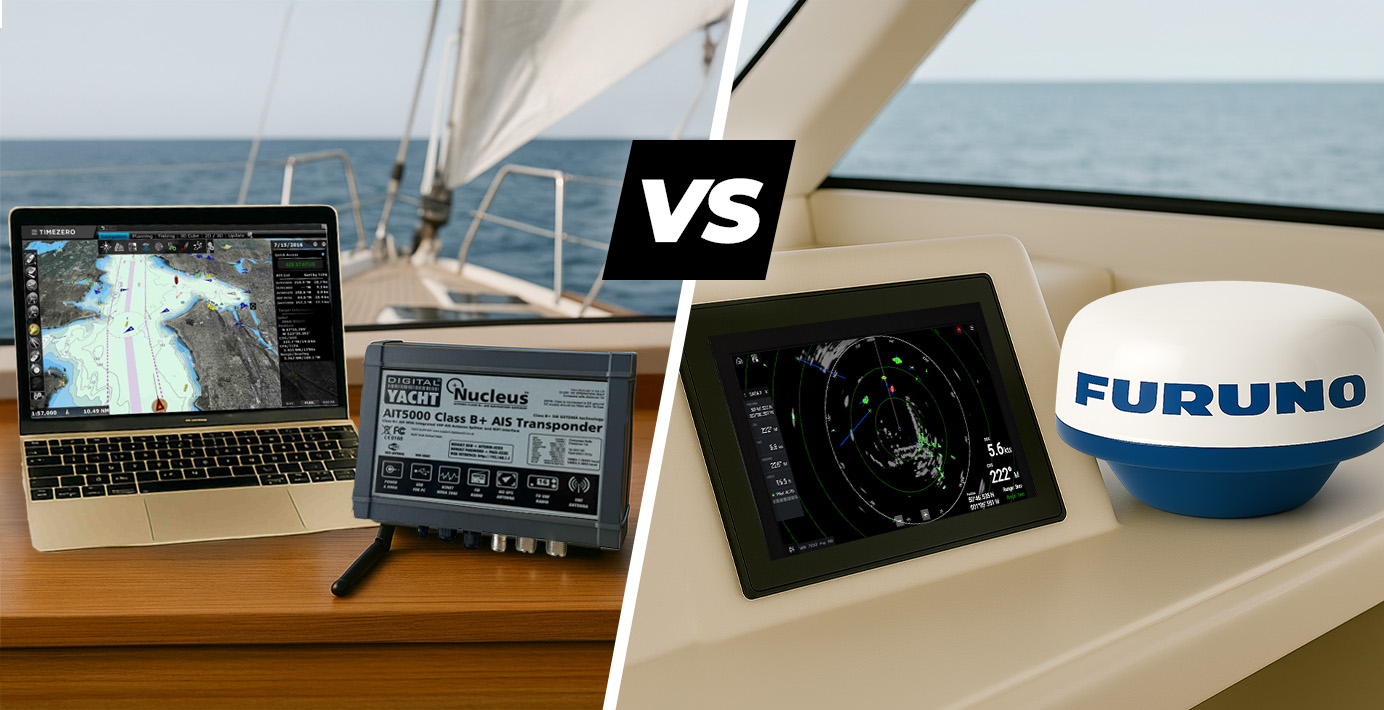
When you’re out on the water—especially in fog, at night, or offshore—knowing what’s around you can mean the difference between a smooth sail and a dangerous situation. Two of the most useful tools to help with this are Radar and AIS (Automatic Identification System).
While both are designed to help you avoid collisions and stay aware of nearby vessels, they work in different ways and have different strengths.
Radar
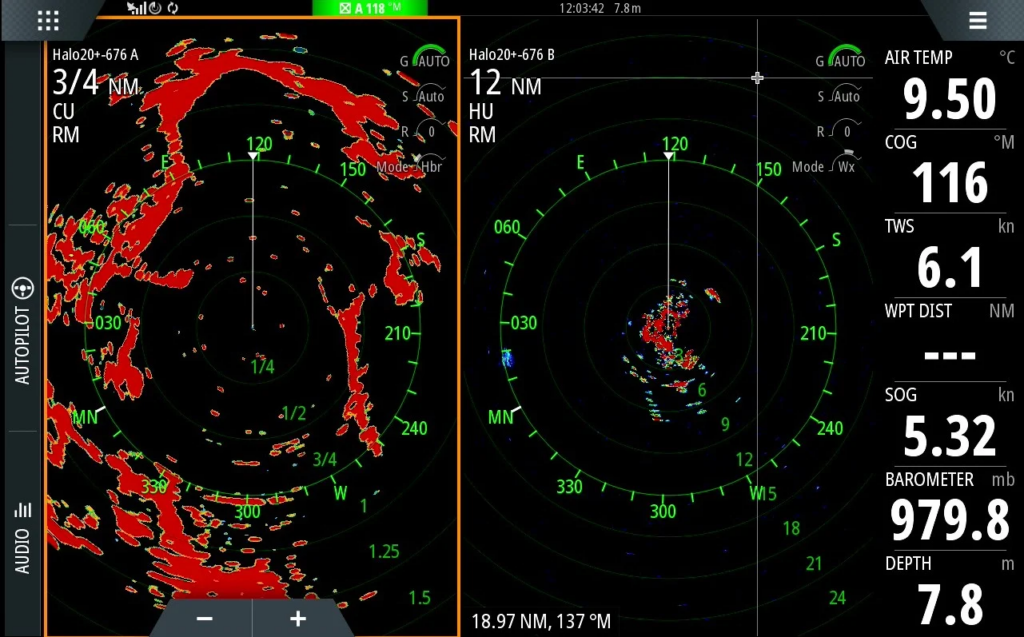
What Radar Does for You
Radar works by sending out radio waves and picking up the echoes that bounce back from solid objects—like boats, land, buoys, and even weather.
Why It’s Useful:
- Works in All Weather: Radar sees through fog, rain, and darkness – although rain can cause clutter on the display and so can large waves (sea clutter)
- Autonomy: Does not depend on cooperation from other vessels.
- Detects Everything: Picks up anything solid—whether it’s another boat, a marker, or a rock.
- Great for Close Quarters: Ideal for navigating in harbors, tight anchorages, or low visibility.
Limitations:
- No Identity Data: Does not provide information about the name, type, or speed of a detected target.
- Interpretation Required: You must interpret radar returns and manually track targets (some radars have ARPA target tracking but its for a limited number of targets and requires a well stabilised system with accurate heading information)
- Signal Interference: Performance can be reduced by sea clutter or heavy precipitation
- Installation: The radar requires a radome or open array to be installed with associated mechanical installation costs and complexity on a mast or structure.
AIS Transponder

What AIS Transponder does for you
An AIS transponder transmits and receives information from other boats. With an AIS transponder, your boat sends out your position, speed, course, and other details—and lets you see the same from nearby AIS-equipped boats.

With an AIS transponder with WiFi, you can even display AIS targets on your Tablet, iPad or even smartphone!
Why it’s useful:
- See Who’s Out There: With an AIS, you get the names, speeds, courses, MMSI, VHF Call Sign and distances of nearby boats but also AtoNs, etc..
- Collision Warnings: Most navigation apps, software or MFD can calculate the Closest Point of Approach (CPA) of every AIS targets but also the Time to CPA (TCPA). They can also trigger an audible and visual alarms. You can also identity and make a DSC radio call to a dangerous vessel using their MMSI number.
- Great Offshore: Commercial ships always carry AIS, so it’s excellent for tracking them early—often 10–20 miles out.
- Easy to install
Limitations:
- Only Sees Transmitting Boats: If a boat doesn’t have AIS, you won’t see it.
- Line-of-Sight Only: The range is limited to what the VHF signal can reach—usually around 20 NM or less.
What’s better?
| Feature | Radar | AIS Transponder |
| Detection Method | Reflected radio waves | VHF signal broadcast |
| Detects Non-Cooperative Targets | Yes | No |
| Provides Identity Info | No | Yes |
| Range | Up to 96 NM (depending on power) | Typically 10–20 NM |
| Works in Fog/Night/Weather | Yes | Yes |
| Cost | From £2000 | From £550 |
| Best Use Case | Collision avoidance, land/weather detection | Traffic monitoring, collision avoidance |
AIS and Radar: the perfect marriage!
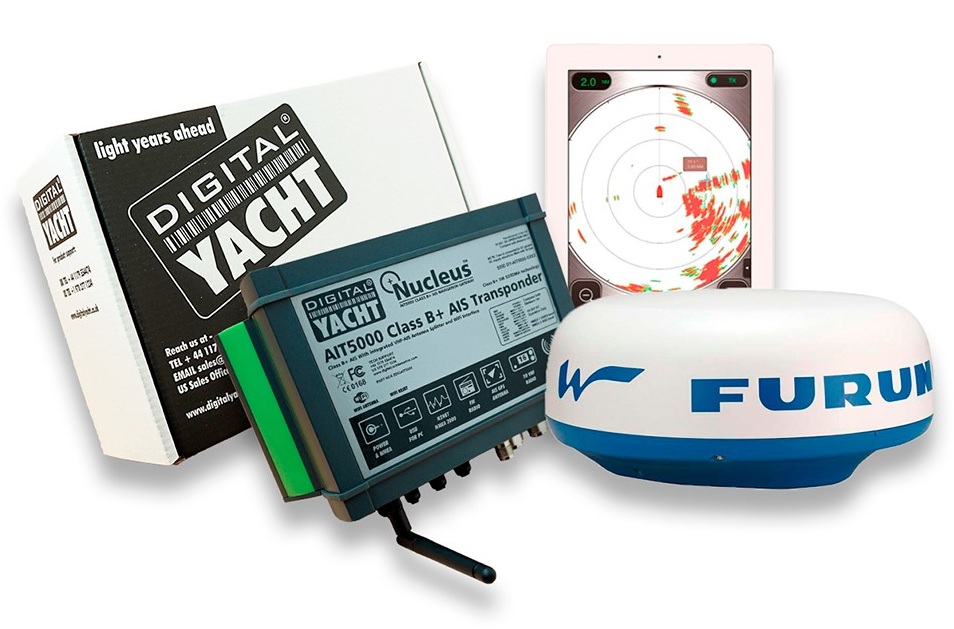
In practice, Radar and AIS are complementary systems, not alternatives. Radar provides raw detection of all physical obstacles, regardless of electronic equipment, while AIS offers rich identification and tracking data for cooperating vessels.
Many modern multifunction displays (MFDs)but also some navigation software allow integrated radar and AIS overlays on electronic charts, providing comprehensive situational awareness.
If you’re sailing offshore, cruising in busy areas, or often out in low visibility, the answer is yes— Radar and AIS is the perfect marriage. Radar sees everything, while AIS gives you crucial data about big ships and other equipped vessels with AIS. Combined, they give you a much clearer, safer picture of what’s around.
Check out below the solutions from Digital Yacht integrating AIS and Radar together.
Solutions from Digital Yacht
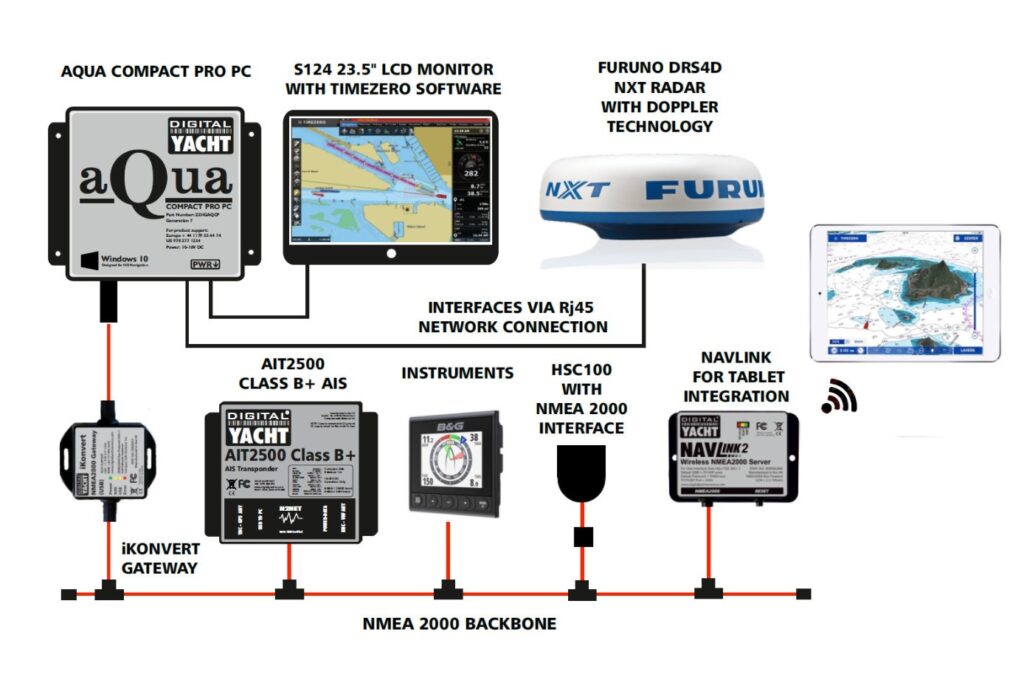
Digital Yacht offers a wide range of PC and Tablet & iPad navigation solutions which integrate Furuno radar and our AIS transponders, allowing you to overlay both radar and AIS data directly onto detailed digital charts.
Whether you’re using our Aqua Compact Pro PC at the chart table or a tablet/iPad at the helm, you’ll benefit from a fully integrated navigation system that combines real-time radar and AIS data.
- PC Solution: This pack integrates a marine PC with a NMEA 2000 network, a Furuno DRS4D NXT Radar with doppler technology and Timezero Navigator software with the Radar module. AIS, GPS and instrument NMEA 2000 data is made available.
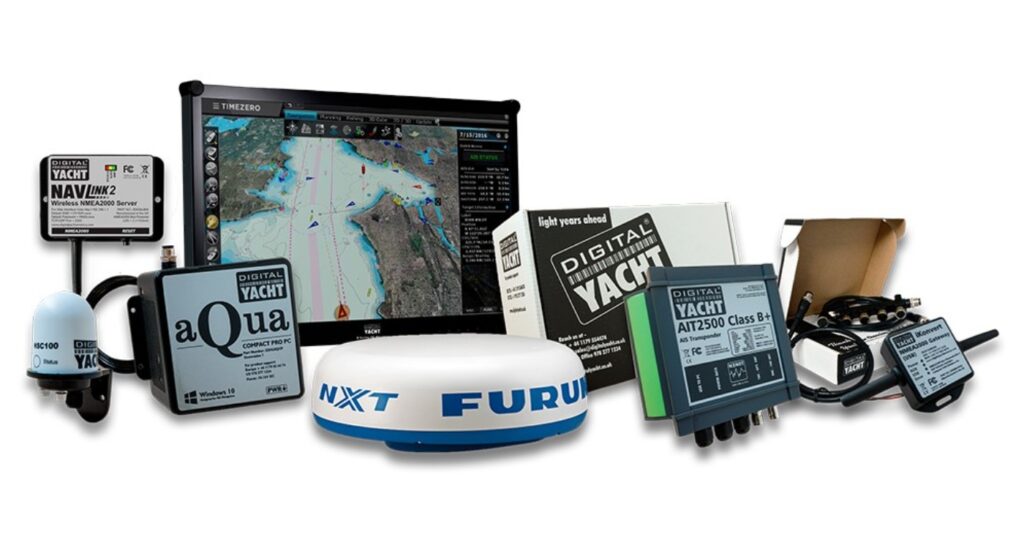
- iPad/iPhone Solution: This pack includes the Furuno DRS4W Radar WiFi with AIT5000 Class B+ AIS Transponder for iPad Navigation Bundle.
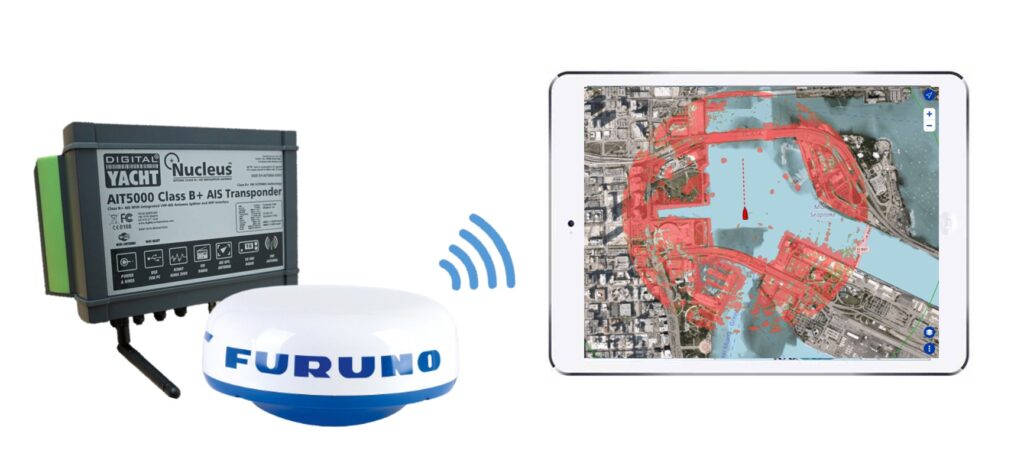
Our solutions are flexible so you can also just order a Aqua PC with an AIS and a Furuno DRS4NXT radar for example.
All our radar solutions use Timezero software so check out below to find out more about Timezero.
Using TimeZero to display both AIS & Radar

The navigation software and apps developed by TimeZero (TZ iBoat and TimeZero software) support full integration of radar and AIS data, allowing users to overlay both onto a single navigational chart display.
TimeZero is compatible with Furuno’s DRS4 series radars (DRS4W for iPad/iPhone and DRS4NXT for PC), enabling radar image overlay directly on the Timezero software or app. Simultaneously, AIS transponder data—such as vessel position, course, speed, and identity—can also be overlaid in real time.







